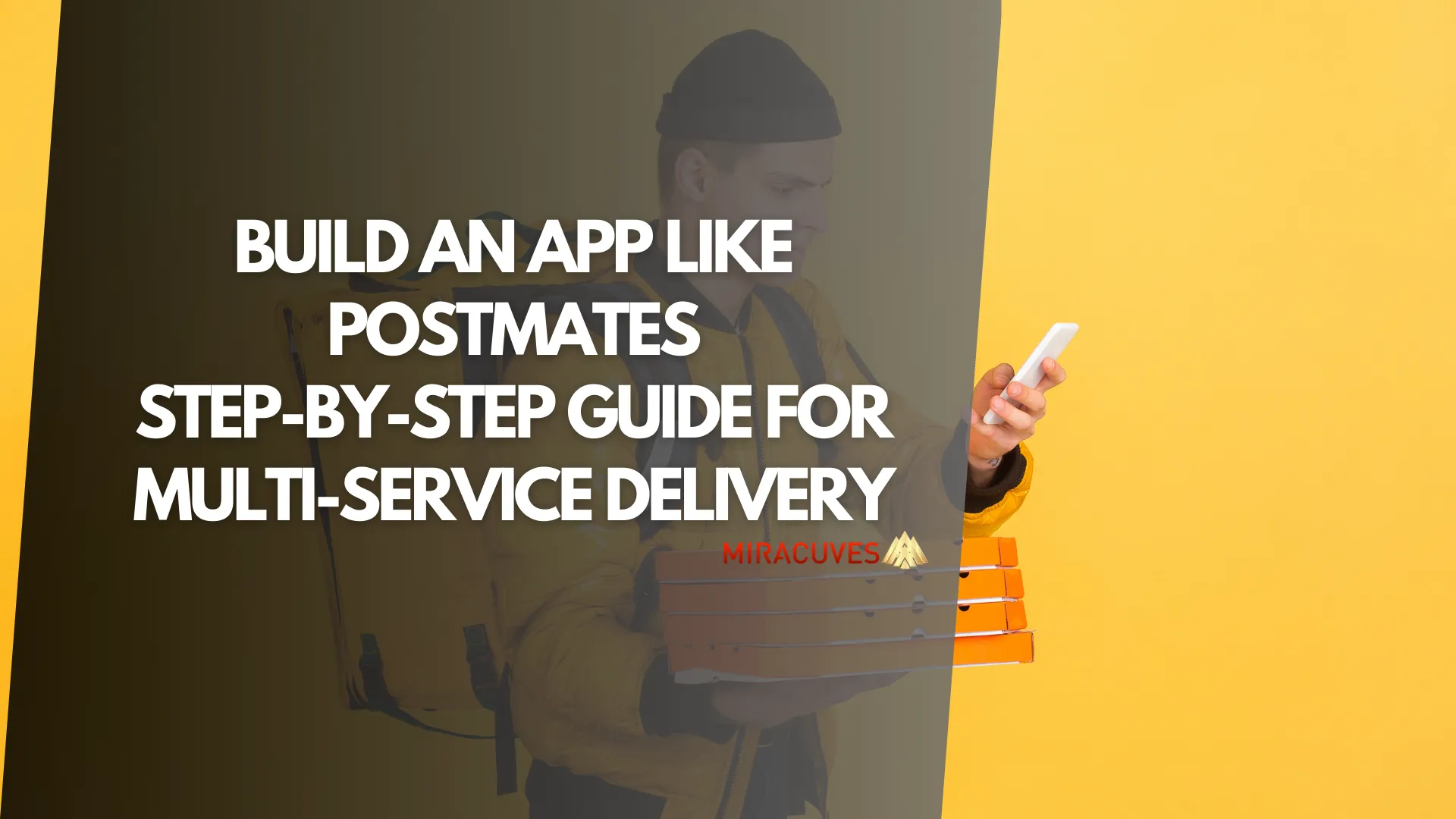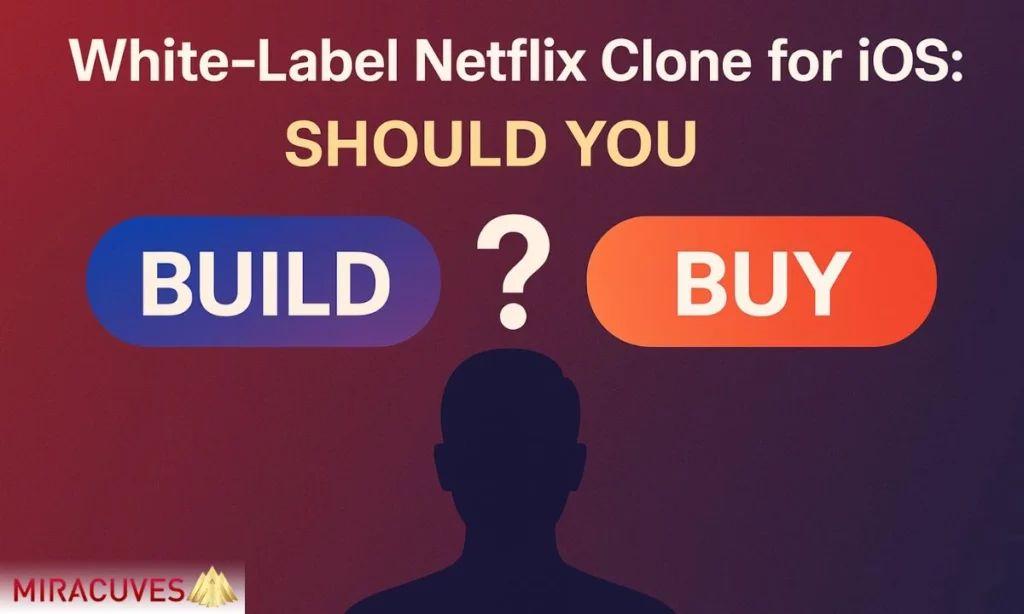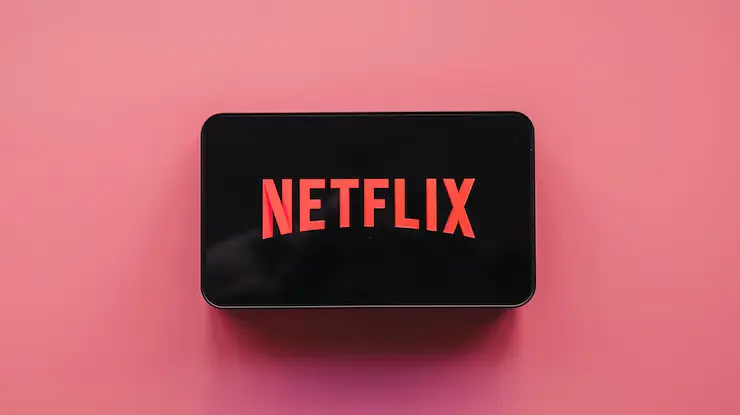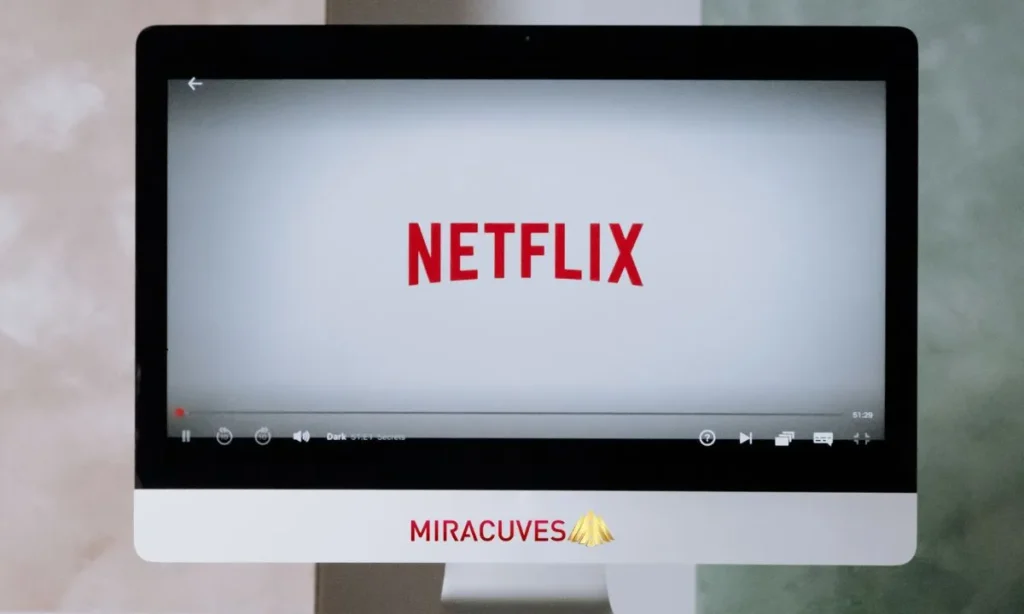In today’s fast-paced world, consumers are increasingly relying on on-demand delivery apps to get everything from groceries to restaurant orders delivered right to their doorsteps. Among the top players in this market, Postmates has established itself as a popular choice for multi-service delivery, offering users the convenience of food, groceries, and other essentials in one app. As businesses look for ways to tap into this growing trend, building a Postmates clone has become a smart and viable solution for entrepreneurs wanting to enter the on-demand delivery service industry.
A Postmates clone refers to a pre-designed, customizable app that mimics the features and functionalities of Postmates, allowing companies to launch quickly and cost-effectively. Whether you’re interested in developing a food delivery platform, a multi-service app, or positioning yourself as a Postmates competitor, this guide will provide a step-by-step approach to building your own app. We’ll dive into the key features, technical requirements, cost estimations, and the best strategies to stand out in a competitive market.
This guide will also demonstrate how leveraging a Ready-made Postmates clone can drastically reduce development time and cost. For instance, the global cost to build such an app may be around $6000, but using a clone solution can reduce that to as low as $600—just 10% of the typical development price. The timeframe for launching can also be reduced from a month to as little as 10 days.
In this detailed breakdown, we will also look at the necessary technical requirements, monetization strategies, and legal considerations to ensure your app is both functional and compliant with industry standards.
What is a Postmates Clone and What Does It Do?
A Postmates clone is essentially a ready-made, highly customizable app that mirrors the functionalities and services provided by the original Postmates platform. Designed for rapid deployment, a Postmates clone allows businesses to launch an on-demand delivery service app without having to build everything from scratch. This clone can be tailored to suit various delivery services, such as food, groceries, medicine, and even retail products, making it a versatile solution for entrepreneurs looking to enter the booming multi-service delivery app market.
At its core, a Postmates clone offers several key functionalities that are critical for a successful on-demand delivery platform:
- Multi-service offerings: Just like Postmates, the clone app supports various types of delivery services, including food, groceries, packages, and more.
- Real-time tracking: Users can track their orders in real-time, from preparation to delivery, ensuring transparency and convenience.
- Multiple payment gateways: The app supports various payment methods such as credit/debit cards, digital wallets, and even cash on delivery.
- User and delivery agent management: The app includes features that allow businesses to manage both customers and delivery agents efficiently, with built-in analytics and reporting tools.
- Geolocation and GPS tracking: The app uses geolocation to match delivery agents with customers based on proximity, ensuring quick and efficient delivery.
A Postmates clone allows you to replicate the success of established players like Postmates but with the flexibility to add or modify features based on your business model. This flexibility is crucial if you’re looking to cater to a specific niche or geographic area, offering services that are tailored to your target market.
Why Build a Postmates Clone?
The demand for on-demand delivery services has exploded in recent years, with apps like Postmates paving the way for a multi-billion dollar industry. But why should you consider building a Postmates clone instead of starting from scratch? The answer lies in both the opportunity and efficiency.
First, the market demand for multi-service delivery apps is at an all-time high. Consumers are increasingly relying on these platforms to get everything they need—be it food, groceries, or household essentials—delivered directly to their doorstep. With the gig economy flourishing, now is the perfect time to launch a Postmates competitor that taps into this growing market.
By choosing to build a Postmates clone, you can significantly reduce both the development cost and time to market. Developing a delivery app from scratch requires not only significant investment but also months of development, testing, and deployment. In contrast, a Postmates clone allows you to launch your app quickly, as it comes with pre-built features that can be customized to meet your business needs.
Additionally, building a Postmates clone gives you the flexibility to adapt to changing market conditions. Want to add a new service like grocery delivery or expand into a new region? A clone app can be easily scaled and updated with new features as your business grows.
Moreover, a Postmates clone allows you to take advantage of a proven business model without needing to reinvent the wheel. The key is to implement smart customizations that set your app apart from existing players, such as offering faster delivery times, better customer support, or specialized local services.
Market Size, Growth, and Revenue Model
The on-demand delivery service market has experienced explosive growth in recent years, fueled by increasing consumer demand for convenience and speed. As people’s lifestyles become busier, the need for fast and reliable delivery services for food, groceries, and other essentials has skyrocketed. According to recent reports, the global on-demand delivery market is projected to surpass $200 billion by 2025, with food delivery alone contributing a significant share of this growth.
Building a Postmates clone allows businesses to tap into this booming market by providing a multi-service platform that caters to a variety of delivery needs. Whether it’s restaurant orders, groceries, or packages, a Postmates clone can offer a comprehensive solution that appeals to today’s consumer.
Revenue Model for a Postmates Clone
There are several ways to monetize a Postmates clone, and the flexibility in revenue models is one of its strongest points. Some of the most common models include:
- Delivery Fees: Charging customers a delivery fee for each order placed on the platform. The fee can be fixed or vary depending on the distance and order value.
- Service Charges: Collecting a small percentage of the total order value as a service charge from restaurants or other businesses.
- Subscription Model: Offering customers a monthly or yearly subscription for unlimited or discounted deliveries.
- In-App Advertising: Generating revenue by allowing restaurants or stores to advertise within the app.
By using one or a combination of these models, a Postmates clone can generate sustainable revenue while providing value to both customers and businesses.
How to Differentiate Your Postmates Clone in the Market
| Customization Option | Advantages | Implementation Ideas |
|---|---|---|
| Niche Targeting | Attracts a specific audience, reduces competition | Focus on organic food delivery, 24/7 service, or local products |
| Faster Delivery Times | Enhances user satisfaction, encourages repeat orders | Prioritize deliveries with optimized routing or priority options |
| Customer Loyalty Programs | Builds long-term customer loyalty | Offer rewards points for each order, redeemable for discounts or free deliveries |
| Better Customer Support | Increases trust and user retention | Provide real-time support, fast issue resolution, and personalized care |
| Sustainability Initiatives | Appeals to environmentally conscious users | Use eco-friendly delivery methods like bikes or electric vehicles |
With the rise of on-demand delivery services, the competition has also grown rapidly. To succeed, your Postmates clone needs to stand out in a crowded market filled with established players like UberEats, DoorDash, and of course, Postmates itself. But how can you make your delivery app different from others?
Here are some effective strategies to differentiate your Postmates clone and create a unique value proposition:
- Niche Targeting: Instead of trying to cater to everyone, focus on a specific niche. For example, your app could specialize in organic food delivery, local products, or offer 24/7 services in areas where larger competitors don’t. This gives you a clear market position and attracts a loyal audience.
- Faster Delivery Times: One way to make your app stand out is by offering faster delivery than your competitors. This could be achieved by optimizing your delivery agent network or offering features like priority delivery for an extra fee.
- Customer Loyalty Programs: Introducing a reward system where users earn points for every delivery could help retain customers. Points can be redeemed for free deliveries or discounts, building loyalty and encouraging repeat orders.
- Better Customer Support: Many on-demand apps struggle with customer service. Providing real-time support, quicker resolution of issues, and personalized customer care could give you an edge over competitors.
- Sustainability and Green Initiatives: Consumers are increasingly aware of environmental impact. Offering eco-friendly delivery options, such as using bikes or electric vehicles for short deliveries, or partnering with eco-conscious vendors, could differentiate your service.
By focusing on any of these strategies, you can create an app that not only meets market demand but also delivers a unique experience that keeps customers coming back.
Key Features of a Postmates Clone
| Feature | Postmates Clone | Other Delivery Platforms |
|---|---|---|
| User Registration & Profile | Social login, easy management of addresses, payments | Varies, some platforms require more manual input |
| Real-Time Order Tracking | Available for all orders, real-time updates | Some platforms offer limited tracking options |
| Multiple Payment Options | Supports credit/debit, wallets, cash on delivery | Limited payment options on some platforms |
| Geolocation & GPS Integration | Accurate matching of delivery agents and users | Basic GPS, may lack real-time updates |
| Notifications & Alerts | Push notifications for order status and promotions | Limited notifications, no real-time updates |
| Ratings & Reviews | Integrated for both customers and delivery agents | Available, but may not include delivery agent ratings |
| Admin Dashboard | Feature-rich for managing orders, users, agents | Often limited to basic management tools |
| Multiple Service Support | Supports food, groceries, and packages | Some platforms focus only on food delivery |
A successful Postmates clone must offer a robust set of features that cater to both customers and delivery partners. The goal is to ensure convenience, efficiency, and reliability for all users. Whether you’re focusing on food delivery, grocery delivery, or other on-demand services, these are the essential features your app should include:
- User Registration and Profile Management:
- Easy sign-up and login options using social media or email.
- Personal profile management to store delivery addresses, payment methods, and order history.
- Real-Time Order Tracking:
- Users should be able to track their orders in real time, from the moment it’s placed until it’s delivered. This boosts transparency and customer satisfaction.
- Multiple Payment Options:
- A variety of payment methods, including credit cards, mobile wallets, and cash on delivery, should be available. Secure and convenient transactions are a must for any delivery platform.
- Geolocation and GPS Integration:
- Accurate geolocation and GPS are critical to matching users with nearby delivery agents and providing real-time updates on delivery progress.
- Notifications and Alerts:
- Push notifications to inform users of their order status, promotions, or any updates in real time.
- Ratings and Reviews:
- A feedback system where customers can rate their experience with delivery agents and the quality of the service or food they received.
- Admin Dashboard:
- A feature-rich admin panel to manage orders, users, delivery agents, and businesses in one place. This helps streamline operations and improve the overall service quality.
- Multiple Service Support:
- Support for various types of deliveries (food, groceries, packages) under one platform, allowing your business to cater to different market needs.
By integrating these features into your Postmates clone, you’ll ensure that both customers and service providers have a seamless and efficient experience. Each feature plays a crucial role in creating a reliable platform that users will trust for their delivery needs.
Minimum Viable Product (MVP) for a Postmates Clone
Building a full-featured delivery app can be time-consuming and expensive, especially for new businesses entering the market. This is where the concept of a Minimum Viable Product (MVP) comes in handy. An MVP allows you to launch your Postmates clone with just the essential features needed to satisfy early adopters, gather feedback, and test your business model before investing heavily in additional features.
What Should Be Included in an MVP for a Postmates Clone?
- User Registration & Login:
- Basic user authentication (via email or phone) with a streamlined sign-up process is a must-have feature for any MVP. This will allow users to quickly register and start using your service without friction.
- Order Placement & Payment Integration:
- At its core, the app needs to enable users to place orders and pay securely. This means including essential payment gateways that accept credit/debit cards and digital wallets.
- Real-Time Order Tracking:
- Real-time tracking is crucial for customer satisfaction. Users should be able to see where their delivery is and the estimated time of arrival.
- Delivery Agent App:
- A simplified version of the app for delivery agents is needed in the MVP. This should include accepting and managing deliveries, navigating to locations via GPS, and marking deliveries as completed.
- Basic Admin Panel:
- For you to manage orders, deliveries, and customers efficiently, a basic admin panel is necessary. Even in an MVP stage, this ensures you can oversee the day-to-day operations effectively.
- Push Notifications:
- Notifications that alert users about their order status and delivery updates are vital, even in the early stages of your app.
Why Start with an MVP?
Launching with an MVP allows you to enter the market quickly with a functional version of your app, keeping costs down while gaining valuable user insights. You can then use this feedback to add more advanced features or fix any early issues, ensuring a smoother final product.
Once the MVP is successful, you can scale up with additional features like loyalty programs, advanced analytics, or multi-service support. This phased approach ensures you don’t overspend or overcomplicate the app at the start.
Technical Requirements for Developing a Postmates Clone
| Component | Global Platforms (Postmates/UberEats) | Postmates Clone Requirements |
|---|---|---|
| Frontend Development | Native apps for iOS (Swift) and Android (Kotlin) | Cross-platform frameworks (React Native, Flutter) |
| Backend Development | Custom-built systems using Java, Scala | Node.js, Ruby on Rails, Python (Django) |
| APIs | Proprietary APIs for internal and external use | Integration with third-party APIs (Google Maps, Stripe) |
| Database | Distributed databases like Cassandra, PostgreSQL | MongoDB (NoSQL) or MySQL/PostgreSQL (SQL) |
| Geolocation Services | Custom GPS tracking systems | Google Maps API or Mapbox |
| Payment Gateway | Proprietary payment systems | Stripe, PayPal, or regional payment processors |
| Cloud Hosting | Custom servers, AWS | AWS, Microsoft Azure, or Google Cloud |
| Security Protocols | Advanced encryption and compliance systems | SSL encryption, GDPR compliance, secure authentication |
Building a Postmates clone requires a strong technical foundation to ensure the app functions smoothly and can scale as your user base grows. From backend infrastructure to front-end user experience, getting the technology stack right is critical to providing a seamless and reliable service. Here are the essential technical components needed to develop a successful multi-service delivery app:
- Frontend Development:
- Mobile App (iOS & Android): The user-facing app should be responsive, fast, and easy to use. Popular frameworks like React Native or Flutter can be used to build cross-platform apps, saving development time and costs.
- Web Interface: Although mobile apps are primary, a web platform can also be a key asset, allowing users to place orders from their desktop or laptop. For this, technologies like HTML5, CSS3, and JavaScript (using React or Angular) are ideal for creating an intuitive user interface.
- Backend Development:
- The backend is the engine that powers the app, handling data processing, order management, and payment transactions. Node.js, Ruby on Rails, or Python (Django framework) are commonly used for backend development due to their ability to handle large amounts of data efficiently.
- APIs: Application Programming Interfaces (APIs) are essential for integrating third-party services such as payment gateways (Stripe, PayPal), Google Maps for geolocation, and SMS/email notifications.
- Database Management:
- A robust database is needed to store user information, order details, payment transactions, and more. For this, MongoDB (NoSQL) or MySQL/PostgreSQL (SQL) databases are common choices due to their scalability and reliability.
- Geolocation Services:
- Accurate real-time tracking and location matching are crucial for any delivery app. Google Maps API or Mapbox can be integrated to provide real-time GPS tracking for both users and delivery agents.
- Payment Gateway Integration:
- Secure and fast payment processing is a must. Popular payment gateway options include Stripe, PayPal, or regional payment processors. These gateways allow the app to accept various forms of payments, including credit/debit cards and digital wallets.
- Cloud Hosting and Storage:
- Hosting your app on a reliable cloud platform ensures scalability and performance. AWS (Amazon Web Services), Microsoft Azure, or Google Cloud are popular choices for cloud hosting, offering flexibility and high availability for growing businesses.
- Security Protocols:
- Data security is crucial, especially when handling sensitive information like payment details. Implementing SSL encryption, secure authentication, and compliance with GDPR or other local data protection laws is necessary to protect users and maintain trust.
By carefully selecting the right technology stack, you ensure your Postmates clone can scale as demand grows while delivering a smooth, efficient experience to users.
Cloud-based hosting services like AWS (Amazon Web Services) or Google Cloud provide scalable infrastructure, which is crucial for handling growing user demand as your app expands. For more details on their pricing and features, visit the official AWS pricing page.
Design and User Interface for a Multi-Service Delivery App
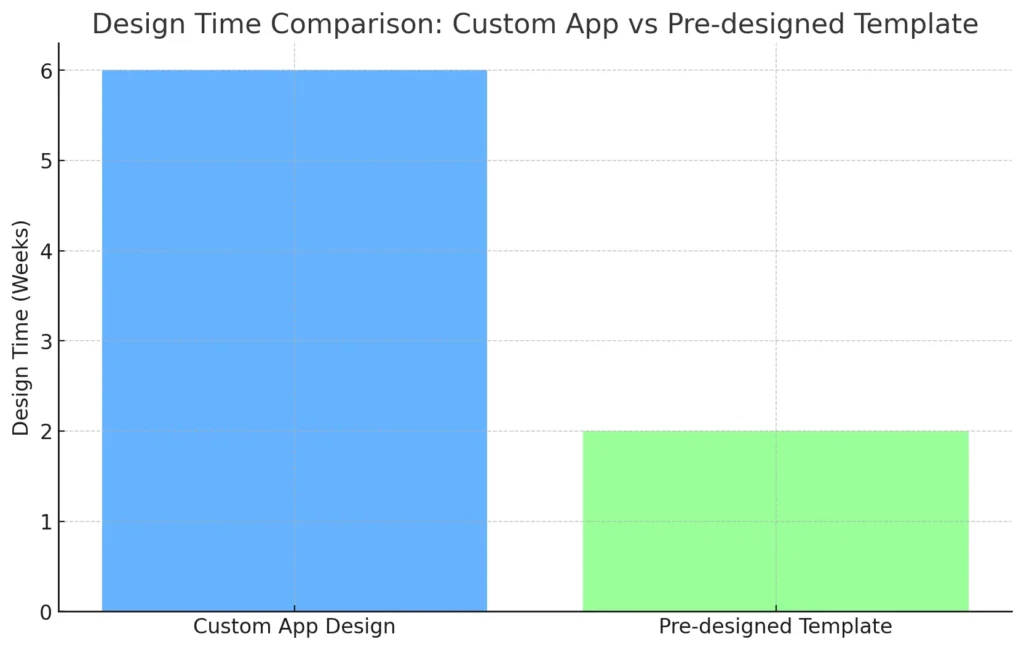
The user interface (UI) and user experience (UX) of a multi-service delivery app like Postmates are crucial elements that can make or break the app’s success. Users expect a seamless, intuitive design that allows them to place orders, track deliveries, and make payments without any hassle. A well-designed app not only enhances user satisfaction but also increases customer retention and engagement.
Here are some key considerations for designing the UI/UX of a Postmates clone:
- Simple and Intuitive Navigation:
- The design should prioritize ease of use, ensuring that users can browse services, select items, and place orders in just a few taps. A clean and minimalistic layout helps users quickly find what they need without feeling overwhelmed.
- Streamlined Order Flow:
- The process from selecting an item to confirming the order should be seamless. Use clear call-to-action buttons, such as “Order Now” or “Add to Cart,” to guide users through each step.
- Responsive Design:
- The app must be fully responsive across different devices, ensuring an optimal experience whether users are on mobile phones, tablets, or desktops. This is essential for accommodating the wide variety of screen sizes in use today.
- Attractive Visuals and Branding:
- Good design also means paying attention to aesthetics. High-quality images, consistent branding, and appealing colors help create a positive impression. The visual design should align with your app’s target audience, whether it’s casual users or a more niche group like eco-conscious consumers.
- Real-Time Updates:
- Users should receive real-time updates on their order status, delivery time, and even offers. Implementing push notifications and in-app alerts keeps users informed and engaged throughout their experience.
- User-Friendly Profile Management:
- Allow users to easily manage their profiles, delivery addresses, and payment methods. A clear and accessible settings menu enhances the user experience, making it easier for them to customize their app usage.
- Quick Access to Support:
- The design should include easy access to customer support, whether it’s via chat, call, or email. A visible help button can greatly enhance the overall user experience, especially if issues arise during order placement or delivery.
By focusing on these design principles, you can create a Postmates clone that delivers an exceptional user experience, driving both customer satisfaction and retention.
Need a scalable delivery app solution?
Our ready-to-use Postmates-style platform can be
customized to meet your needs.
Development Process for a Postmates Clone
| Development Phase | Custom App Development (Time) | Pre-designed Postmates Clone (Time) |
|---|---|---|
| Planning & Requirement Gathering | 2 weeks | 1 week |
| Wireframing & Prototyping | 3 weeks | 1 week |
| Frontend & Backend Development | 8 weeks | 3 weeks |
| API Integration | 2 weeks | 1 week |
| Testing | 3 weeks | 1 week |
| Deployment | 1 week | 1 week |
| Total Time | 19 weeks | 8 weeks |
Building a Postmates clone follows a structured development process that allows for rapid deployment while ensuring all essential features work seamlessly. The goal is to move efficiently from planning to launch without sacrificing quality, and by using a pre-designed solution, this process becomes significantly faster and more cost-effective.
Here’s a step-by-step breakdown of the development process:
- Planning and Requirement Gathering:
- The first step is to clearly define the app’s purpose, target audience, and core features. This includes understanding the market needs and how your clone will stand out from competitors. You’ll also need to choose the services you’ll offer—whether it’s just food delivery or a full multi-service platform.
- Wireframing and Prototyping:
- A wireframe is a blueprint for your app’s layout and user flow. This helps in visualizing how users will interact with the app. Prototyping tools like Figma or Sketch can be used to create mockups of the app screens, giving you a clear sense of design and navigation before moving to actual development.
- Frontend and Backend Development:
- In this stage, developers create both the user interface (frontend) and the functional logic (backend) of the app. For a Postmates clone, it’s important to focus on performance, ensuring features like real-time tracking, order management, and payments run smoothly. Frontend development can be done using frameworks like React Native for cross-platform compatibility, while backend services can be powered by Node.js or Python (Django) for robust data processing and management.
- API Integration:
- Integrating external services like Google Maps for geolocation, Stripe or PayPal for payment processing, and notification services like Twilio for SMS updates is a key part of this phase. APIs ensure that your app connects seamlessly with third-party services that enhance its functionality.
- Testing:
- Before launching the app, it’s crucial to thoroughly test both the frontend and backend to ensure there are no bugs or performance issues. User testing is also vital, as it provides feedback on the overall user experience. Testing should cover everything from functionality and security to performance and usability across different devices and operating systems.
- Deployment:
- Once testing is complete, the app is ready for launch. Deploying the app to platforms like Google Play and the Apple App Store requires compliance with their respective guidelines, so this step involves ensuring your app meets all necessary criteria, including security protocols and data privacy policies.
- Post-Launch Maintenance:
- After launch, continuous monitoring is required to track performance and user feedback. Regular updates and feature enhancements are key to keeping your app competitive. Maintenance also includes fixing any bugs that arise and scaling the app to accommodate growing user demand.
By following this structured development process, you can ensure your Postmates clone is built efficiently while maintaining high standards of performance and user experience. Leveraging pre-designed templates can cut development time dramatically, allowing you to focus more on testing and fine-tuning.
Cost Estimation and Timeframe for Building a Postmates Clone
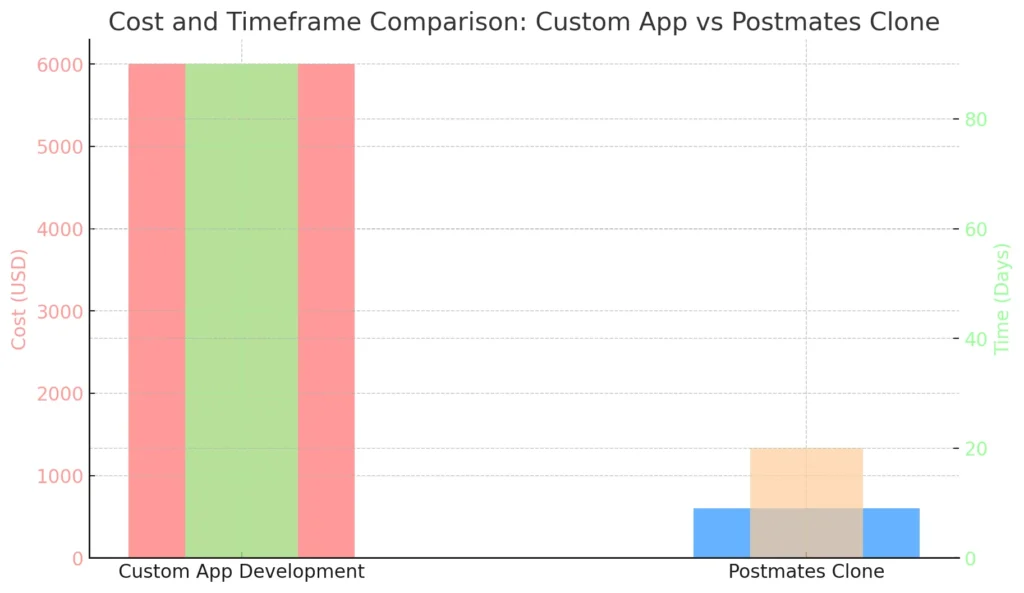
Building an app like Postmates can be an expensive and time-consuming process, especially if you’re developing it from scratch. However, by using a Postmates clone, you can drastically reduce both the cost and the timeframe required to launch your app. Let’s break down the typical costs and timeframe for developing a Postmates clone versus a custom-built app.
Cost Estimation
- Custom App Development:
- Developing a delivery app from the ground up requires substantial investment in design, development, testing, and maintenance. The global cost for building an app similar to Postmates is typically around $6000 to $10,000 depending on complexity and additional features.
- Postmates Clone Cost:
- By opting for a pre-designed Postmates clone, the cost is reduced to 10% of the global price, which means you can build the app for around $600 to $1000. This includes the core functionalities such as user registration, payment gateways, geolocation services, and basic real-time order tracking. The cost may vary slightly depending on the level of customization needed.
Timeframe
- Custom App Development:
- A custom-built delivery app can take anywhere from 3 to 6 months to complete. This includes time for planning, design, development, testing, and final deployment. Each phase requires careful attention, and building an app from scratch tends to extend timelines due to the need for extensive coding and testing.
- Postmates Clone Timeframe:
- With a Postmates clone, the timeframe is significantly shorter. You can expect to launch your app within 10 to 20 days, depending on the amount of customization required. The pre-built nature of the clone allows developers to skip many time-consuming steps, such as building the core functionalities, and focus more on personalization and fine-tuning.
Where the Savings Come From
- The savings in both cost and time are largely due to the use of pre-built templates that come with core features already integrated. This eliminates the need for designing and coding from scratch, which is the most labor-intensive (and costly) part of app development.
- Post-launch costs such as updates and maintenance are also lower with a clone solution, as these apps are designed to be easily scalable and adaptable.
Why Trust Miracuves Solutions for Your Next Project?
When building a complex app like a Postmates clone, you want to ensure that your investment is not only cost-effective but also reliable. Turnkey solutions, like ready-made clones, offer a solid foundation for quickly launching your app without sacrificing quality. But why should you trust Ready-made solutions for your next project? Let’s explore the key reasons:
1. Proven Track Record
Pre-designed solutions are often developed by experienced companies with a track record of delivering successful apps. These clones are modeled after platforms that have already been tested in the market, such as Postmates, meaning that the core functionalities—like real-time tracking, multi-payment gateways, and efficient order management—are battle-tested.
2. Cost Efficiency
Building an app from scratch can be incredibly expensive, often requiring months of development and a large team of developers. Ready-made solutions, on the other hand, provide 90% cost savings, allowing businesses to access enterprise-level technology at a fraction of the price. You get the core functionality needed to run your business while keeping costs manageable.
3. Faster Time to Market
In today’s fast-paced market, speed is everything. Turnkey solutions allow you to launch your app in a matter of weeks rather than months, giving you a competitive edge. This means you can capitalize on market trends or get your product out there before competitors have time to react. A Postmates clone, for instance, can be ready for deployment in just 10 to 20 days, compared to 3-6 months for a custom-built app.
4. Customizability
Despite being pre-built, clone solutions offer a high degree of flexibility and customization. You can tweak the user interface, add unique features, or optimize performance to suit your specific business needs. Whether you’re looking to build a Postmates competitor or create a niche delivery service, a Turnkey solution gives you the flexibility to tailor the app to your vision.
5. Lower Maintenance Costs
Maintaining a custom-built app requires constant updates, bug fixes, and scaling solutions, all of which can add up in cost. Ready-made solutions typically come with ongoing support and maintenance packages, making it easier and cheaper to keep your app running smoothly.
The Bottom Line
A Ready-made Postmates clone offers the perfect balance of reliability, speed, and customization. By trusting in a proven solution, you can launch your app faster, save on costs, and avoid the technical challenges that come with building from scratch. This allows you to focus more on growing your business and less on technical complexities.
Monetization Strategies for a Postmates Clone
One of the most important aspects of building a successful Postmates clone is figuring out how to make it profitable. While the app itself provides a valuable service, its success largely depends on the right monetization strategies. Here are some tried-and-true ways to generate revenue from your delivery app:
1. Delivery Fees
Charging users a delivery fee is the most straightforward monetization method. These fees can vary based on factors like delivery distance, order size, or demand during peak hours. Many delivery apps, including Postmates, apply surge pricing during busy times, helping to maximize revenue while meeting high demand.
2. Service Charges
Another way to generate income is by charging service fees to both users and merchants. For example, restaurants or stores that want to list their services on your platform can pay a commission for every order placed. This commission-based model is a win-win as it allows businesses to reach more customers while giving you a steady revenue stream.
3. Subscription Model
A subscription-based model offers users the option to pay a monthly or yearly fee in exchange for benefits like unlimited free deliveries, discounts, or access to premium services. This model is popular with frequent users who value convenience and cost savings. Apps like Postmates offer a subscription service (Postmates Unlimited), which users can opt into for a fixed monthly fee.
4. In-App Advertising
Partnering with businesses for in-app advertising is another way to boost revenue. For example, restaurants or stores can pay to have their business featured more prominently in the app, similar to sponsored listings. You can also offer special promotions where businesses pay for banner ads or exclusive deals visible to users. This not only generates income but also helps businesses gain more visibility on the platform.
5. Promotional Deals and Partnerships
Collaborating with local restaurants, grocery stores, or retailers to offer exclusive deals through your app can drive traffic and increase order volumes. For example, running promotions like “Get $5 off your first order” can incentivize new users to sign up and place an order. These partnerships can be mutually beneficial, as they provide businesses with more customers while you earn a share of the revenue.
By incorporating a combination of these strategies, you can create multiple revenue streams and maximize profitability. Each model provides different benefits, so choosing the right mix depends on your target audience and the services you offer.
Launching and Marketing Your Postmates Clone
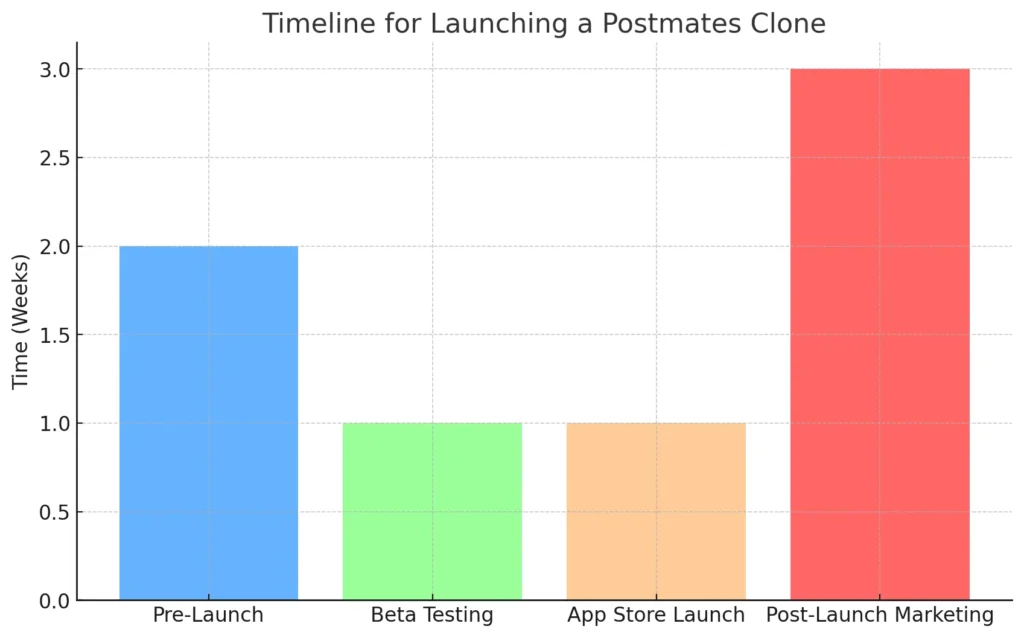
After completing the development of your Postmates clone, the next crucial step is a successful launch followed by an effective marketing strategy. Launching a delivery app into a competitive market requires careful planning, but with the right approach, you can gain early traction and build a loyal user base.
1. Pre-Launch Preparations
Before you launch, it’s essential to build excitement around your app. Here are some key steps to take:
- App Store Optimization (ASO): Just like websites use SEO to rank on Google, your app needs ASO to appear prominently in app store searches. This involves using relevant keywords, high-quality app screenshots, and an engaging app description.
- Landing Page: Create a professional landing page for your app where users can learn about its features, see testimonials, and sign up for notifications or pre-registration. A well-designed website serves as a hub for all your marketing efforts.
- Social Media Buzz: Build anticipation by leveraging social media platforms like Instagram, Facebook, and Twitter. Tease your app’s features, provide sneak peeks, and even offer early access or discounts to those who sign up before the official launch.
2. Launching the App
When the launch day arrives, you need to ensure a smooth rollout:
- Beta Testing: Start with a soft launch by releasing the app to a limited audience for beta testing. This allows you to catch any bugs, fix performance issues, and gather user feedback.
- App Store Launch: After beta testing, submit your app to the Google Play Store and the Apple App Store. Ensure that all the necessary guidelines are followed to avoid any delays in the approval process.
3. Post-Launch Marketing Strategies
Once your app is live, it’s time to kickstart your marketing efforts. Here are some proven strategies:
- Influencer Marketing: Partner with influencers who align with your target audience to promote your app. Influencers can provide reviews, tutorials, or special promotions to their followers, driving traffic to your app.
- Referral Programs: Offer incentives to your users for referring new customers. A referral program like “Get $5 off your next order when you invite a friend” can significantly increase user acquisition.
- Local Advertising: Invest in geo-targeted ads through platforms like Google Ads or Facebook Ads to target specific areas where you want to expand your delivery services. You can tailor your ads based on location, demographics, and user behavior.
4. Customer Retention
Acquiring users is just the first step—retaining them is equally important. To keep customers engaged:
- Push Notifications: Send targeted push notifications for exclusive deals, order updates, and new services.
- Loyalty Programs: Introduce a rewards system where frequent users can earn points and redeem them for free deliveries or discounts.
- Customer Support: Provide real-time customer support to resolve issues quickly and ensure a positive user experience.
By combining these launch and marketing strategies, you’ll position your Postmates clone for long-term success, ensuring it stands out in the competitive delivery app market.
Visual Suggestion: A timeline chart illustrating the key phases of launching (pre-launch, beta testing, full launch, marketing efforts) would provide a clear roadmap for entrepreneurs.
Legal and Regulatory Considerations
Launching a Postmates clone involves not only technical and business challenges but also adhering to several legal and regulatory requirements. Whether you’re operating locally or expanding into multiple regions, it’s essential to ensure that your app complies with relevant laws. Ignoring these aspects can result in hefty fines, operational shutdowns, or even customer trust issues. Here are the most critical legal and regulatory factors to keep in mind:
1. Data Privacy and Security
With the rise of digital services, data protection has become a major concern. Your delivery app will collect sensitive user information, including addresses, payment details, and order histories. To safeguard this data, you need to comply with privacy laws such as:
- GDPR (General Data Protection Regulation) if you’re operating in the EU.
- CCPA (California Consumer Privacy Act) for users in California, USA. Ensure your app includes a privacy policy that clearly outlines how user data is collected, stored, and used. Implement SSL encryption, secure payment gateways, and multi-factor authentication to provide additional layers of security.
2. Licensing and Permits
Depending on the region or city, you may need to secure specific licenses to operate your delivery service. For example, if your Postmates clone offers alcohol delivery, you’ll need to obtain alcohol distribution permits and comply with local laws. Similarly, food delivery apps may need health certifications or agreements with local food safety authorities.
3. Consumer Protection Laws
To build trust and maintain a positive relationship with your customers, it’s important to comply with consumer protection laws. These laws ensure transparency in pricing, fair delivery practices, and honest marketing. Make sure your app clearly displays pricing information, delivery fees, and any additional charges. You should also have a clear refund or cancellation policy that customers can easily access.
4. Payment Compliance
When handling online transactions, your app must follow regulations related to payment processing. Ensure that your payment gateways comply with PCI-DSS (Payment Card Industry Data Security Standard) to protect users’ credit card information. It’s also important to collaborate with trusted payment processors like Stripe or PayPal to meet these requirements seamlessly.
5. Labor Laws and Gig Workers
If your Postmates clone employs gig workers (delivery agents), you need to ensure compliance with labor laws in the regions where you operate. Many countries have introduced stricter labor laws to protect gig workers, including minimum wage, work-hour limits, and benefits like insurance. You’ll also need clear contracts outlining the terms of engagement with delivery agents.
6. Intellectual Property (IP)
If you’re using custom branding, proprietary features, or unique functionalities in your Postmates clone, you should consider protecting your intellectual property through trademarks or patents. This not only safeguards your brand identity but also prevents competitors from copying key elements of your app.
By ensuring compliance with these legal and regulatory factors, you can avoid potential roadblocks and ensure smooth operations while building trust with users and partners.
When handling user data, compliance with data protection laws such as GDPR is essential. To ensure your app adheres to these regulations, you can review the official GDPR guidelines here.
Future Growth and Scalability of a Postmates Clone
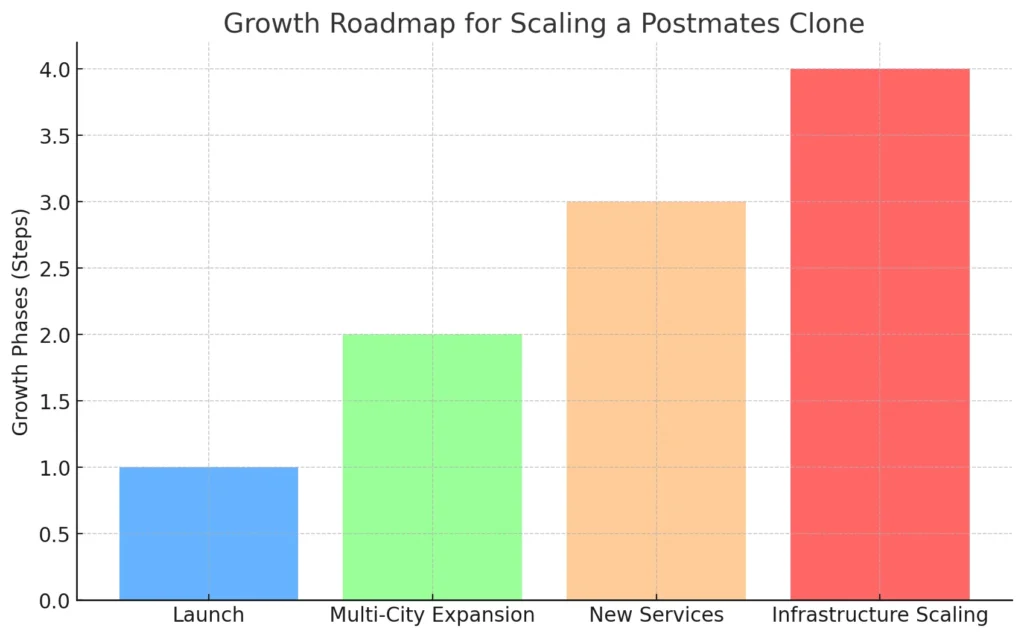
Launching a Postmates clone is just the beginning of your journey into the on-demand delivery space. As your user base grows and your services expand, it’s important to focus on scalability and future growth. Scalability refers to your app’s ability to handle an increasing number of users, services, and geographical regions without a drop in performance or user experience.
Here are some key strategies to ensure your Postmates clone is ready for future growth:
1. Multi-City and Multi-Country Expansion
One of the biggest opportunities for growth in the on-demand delivery market is expanding your service to new cities or even countries. To do this successfully, your app needs to support:
- Multi-location functionality: The ability to operate in different cities with varying delivery zones, partner networks, and regulations.
- Localized features: Tailoring your app’s language, currency, and payment methods to suit the local market.
- Logistics management: Ensuring smooth coordination between delivery agents, merchants, and customers across multiple regions.
2. Scaling Infrastructure
As your app grows, so will the number of orders and users. To accommodate this growth, you need to ensure your app’s infrastructure is scalable. This can be achieved by:
- Using cloud-based hosting services like AWS (Amazon Web Services) or Google Cloud that can automatically scale server resources as demand increases.
- Load balancing to distribute traffic evenly across servers, ensuring the app performs smoothly even during peak usage times.
- Ensuring your database is scalable (e.g., using MongoDB or PostgreSQL) to handle large amounts of data related to users, orders, and transactions.
3. Adding New Services
To grow beyond food and grocery delivery, you can introduce additional services like:
- Courier or package delivery: Expanding into personal or business package deliveries.
- Pharmacy and medical supplies delivery: Tapping into the healthcare sector.
- Alcohol or cannabis delivery: In regions where it’s legal, these services can be lucrative markets to explore.
4. Enhancing App Features
As competition increases, adding new features can help differentiate your Postmates clone and keep users engaged. Consider integrating:
- AI-based recommendations: Suggesting restaurants or services based on user preferences.
- Advanced delivery tracking: Offering more detailed delivery progress, like the driver’s current location, distance, and estimated arrival time.
- Subscription plans: Introducing premium services or subscription packages, such as free deliveries for a fixed monthly fee.
5. Partnerships and Collaborations
Forming partnerships with local businesses, restaurants, or even national brands can help fuel your growth. These partnerships can include:
- Exclusive deals or offers: Providing users with special discounts for certain restaurants or stores.
- Collaborative marketing: Partnering with merchants for co-branded campaigns that help both parties reach new customers.
6. Focus on User Retention
While growth is important, retaining your existing users is key to sustainable success. Implement strategies to keep users coming back, such as:
- Loyalty programs: Rewarding repeat customers with points, discounts, or exclusive deals.
- Personalized notifications: Using data to send tailored push notifications about promotions or services relevant to users’ preferences.
By focusing on scalability, expanding into new markets, and continuously adding value through new services and features, your Postmates clone can experience long-term growth while staying competitive in the on-demand delivery landscape.
Also Read :- How to Build a Food Delivery Platform Like Amazon Fresh: From Design to Launch
Conclusion
In today’s fast-paced, on-demand economy, launching a Postmates clone is a strategic way to tap into the growing demand for delivery services. With the right approach, businesses can quickly enter the market, offering users the convenience of multi-service deliveries for food, groceries, and more. A Postmates clone provides an efficient and cost-effective path to success by leveraging Miracuves Solutions that dramatically cut down development time and costs while still offering full customization and scalability.
From understanding the technical requirements to choosing the right monetization strategies, and from planning your app’s features to ensuring legal compliance, this guide has walked you through each essential step of building and launching a successful on-demand delivery app. With the potential to expand into new cities, add more services, and scale the infrastructure, a Postmates clone can be the perfect foundation for creating a thriving, future-proof business.
By focusing on user experience, market trends, and continuous growth strategies, you’ll position your app for long-term success in the competitive delivery market. Whether you’re an entrepreneur looking to launch quickly or an existing business aiming to diversify its service offerings, investing in a Postmates clone can provide the edge you need to stand out.
Looking to build your own on-demand delivery app like Postmates?
Our team of experts can guide you through the entire process, from development to launch.
FAQs
How much does it cost to develop a Postmates clone?
The cost of developing a Postmates clone can vary, but using a pre-designed solution can reduce costs by up to 90%. Typically, you can build a clone for $600 to $1000, compared to $6000 or more for a custom-built app.
How long does it take to launch a Postmates clone?
A Postmates clone can be launched in as little as 10 to 20 days, thanks to pre-built templates that speed up development. Custom apps, on the other hand, can take 3 to 6 months to complete.
Can I customize a Postmates clone?
Yes, Postmates clones are highly customizable. You can modify the user interface, add new features, and tailor the app to meet your specific business needs, offering a unique user experience.
What kind of services can I offer through a Postmates clone?
A Postmates clone can be used to offer various services, including food delivery, grocery delivery, package delivery, and even specialized services like pharmacy or alcohol delivery.
What payment options can I integrate with my Postmates clone?
You can integrate multiple payment gateways such as Stripe, PayPal, or local providers, and offer various payment options like credit/debit cards, digital wallets, and cash on delivery for a seamless customer experience.
Optimize your delivery operations with Miracuves – built for fast logistics, real-time tracking, and smooth dispatching:
Uber Delivery Like Service – An on-demand delivery service offering real-time tracking, flexible dispatch, and a smooth customer journey.
FedEx Like Service – A reliable delivery service for managing shipments, tracking packages, and ensuring efficient logistics flow.



